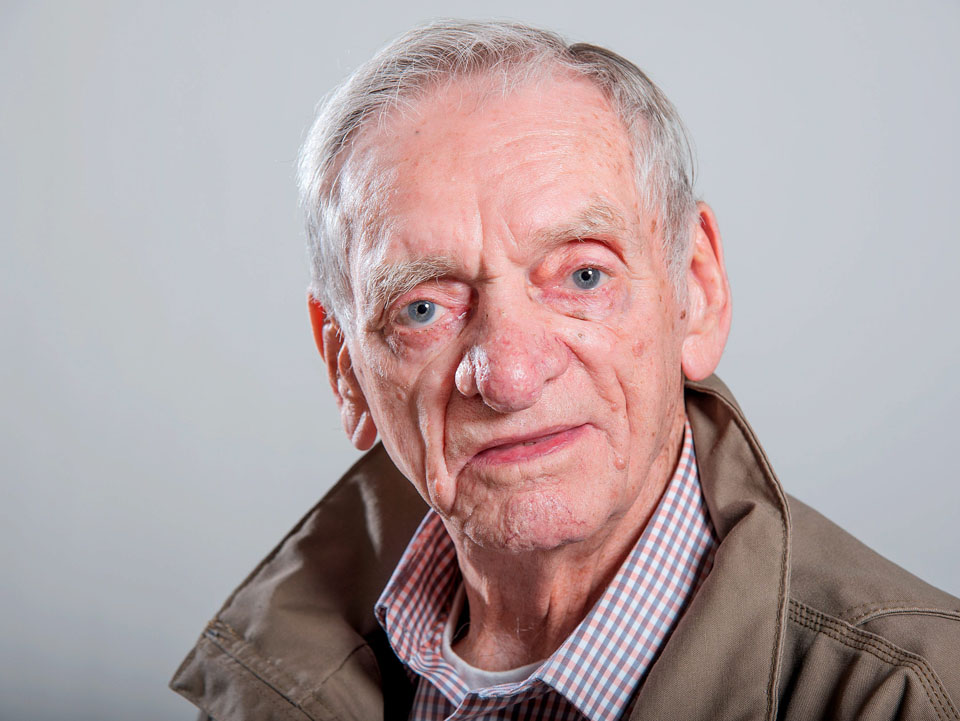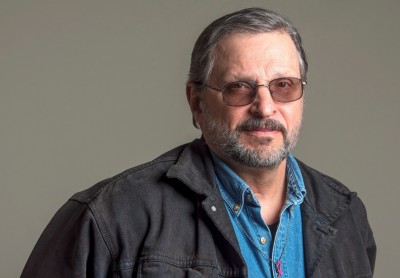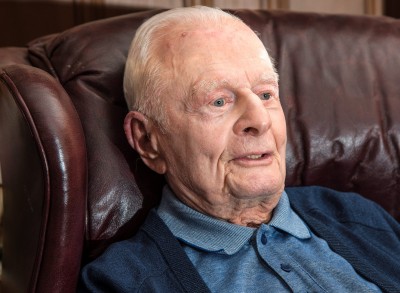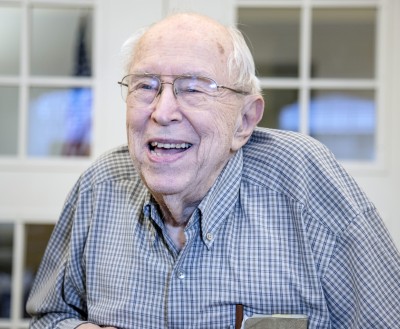Mel Schriefer
By Paul Wood

Photo By Heather Coit/The News-Gazette
ALVIN — After serving in Korea, Sgt. 1st Class Mel Schriefer faced an even greater danger — serving as a test subject in an atomic blast.
Schriefer, 87, a longtime University of Illinois staffer and well-known distance runner, says Operation Upshot, a Nevada test in 1953, was the only time the U.S. shot its “atomic cannon.”
More than 21,000 soldiers took part in the ground exercise Desert Rock V, the “Grable” shot.
Grable was a 280-millimeter shell fired from the atomic cannon.
“It was scarier than anything in Korea,” he recalls.
Korea was a long way from Danforth, where he’d been an all-around athlete, including football, basketball and track events like hurdling and long jump — but not the long distances he would eventually run, including being recognized for running every mile of Champaign County roads.
He’d wanted to join up for World War II, angered by the attack on Pearl Harbor and the stories of Nazi concentration camps, but was too young.
He enlisted in the Army in June 1948, three weeks after graduation from Herscher High School, and stayed in for six years.
The Korean War started in 1950, and he spent a long journey on a troop ship to Japan, then Inchon in Korea.
In the service, he picked up a tobacco habit — “cigarettes were a crutch” — that he later gave up to become a runner.
In all, he spent 11 months in Korea in the 7th Infantry as a quartermaster and platoon sergeant, often in danger at the front lines.
“There was shooting all the time, but they never hit me,” Schriefer says. A blast did cause him some deafness that worsened with age.
After the war, Schriefer received training in chemical, biological and radiological weaponry.
He was part of a large group of soldiers who took a troop train to Camp Desert Rock, Nev., for the bomb blast called “Grable.”
“We were in trenches about 5 foot deep and about 3 feet wide,” he says. “There were 3,000 of us there. Some got knocked over.”
The soldiers were about 4,500 meters from ground zero.
Not very much.
“Grable” was about the same size as the bombs they dropped on Hiroshima and Nagasaki, Schriefer recalls.
“The light from it was 100 times brighter than sunlight,” he says.
In the desert march after the blast, radioactive dust fell on the soldiers.
The soldiers wore gas masks, but it was so hot, Schriefer says, they would sometimes pull them to one side to get some air.
Schriefer has a document verifying his experience as an atomic bomb veteran, and wonders if it may have contributed to later health problems.
Despite a running career that put him in the Peoria Steamboat Classic Hall of Fame in 2008, he’s had some scares.
He comes from a large farm family, and he is only one of them to have cancer, from which he has recovered.
In recent months, he has received hyperbaric (oxygen) treatments for internal bleeding that he thinks may be related to his radioactive exposure.
After his service, Schriefer rose through the ranks of the University of Illinois, where he was superintendent of building services. After retirement, he had a cattle farm near Alvin.
Along the way, he raised seven children.
One of his joys has been travel, to China, Korea, and, in one sadder instance, to the Auschwitz death camp in Poland.
He ran around Red Square and along a length of the Great Wall of China, and has only in the last few years given up running, which he said he misses more than anything he ever did.
Do you know a veteran who could share a story about military service? Contact staff writer Paul Wood at pwood@news-gazette.com.
Read more stories from local veterans:
 Ray Wolst
RANTOUL — Vietnam era veteran Ray Wolst is on Tuesday’s honor flight. “I’m pretty proud of that, and I’ve never been to …
Ray Wolst
RANTOUL — Vietnam era veteran Ray Wolst is on Tuesday’s honor flight. “I’m pretty proud of that, and I’ve never been to …
 Richard Schlecht
DANVILLE — Today is Richard Schlecht’s 100th birthday. You wouldn’t guess it from the way he gets out of his chair to gr …
Richard Schlecht
DANVILLE — Today is Richard Schlecht’s 100th birthday. You wouldn’t guess it from the way he gets out of his chair to gr …
 Bob Bokenkamp
SAVOY — In taking several islands in the South Pacific, Bob Bokenkamp, a retired associate dean of students, said Americ …
Bob Bokenkamp
SAVOY — In taking several islands in the South Pacific, Bob Bokenkamp, a retired associate dean of students, said Americ …